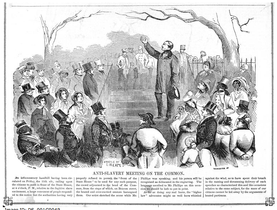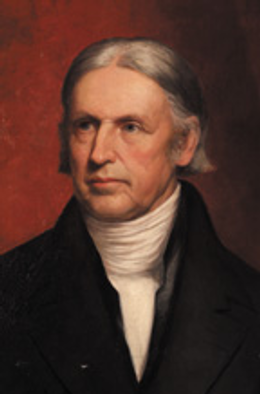
Hosea Ballou D.D. was an American Universalist clergyman and theological writer.

Richard Upjohn was a British-American architect who emigrated to the United States and became most famous for his Gothic Revival churches. He was partially responsible for launching the movement to popularity in the United States. Upjohn also did extensive work in and helped to popularize the Italianate style. He was a founder and the first president of the American Institute of Architects. His son, Richard Michell Upjohn, (1828-1903), was also a well-known architect and served as a partner in his continued architectural firm in New York.

Frank Leslie was an English-born American engraver, illustrator, and publisher of family periodicals.
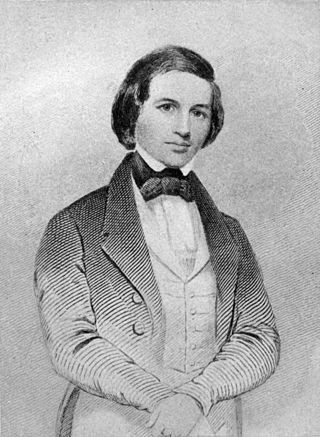
Timothy Shay Arthur — known as T. S. Arthur — was a popular 19th-century American writer. He is famously known for his temperance novel Ten Nights in a Bar-Room and What I Saw There (1854), which helped demonize alcohol in the eyes of the American public.
The following list includes all the works of Lydia Sigourney that were published as books under her supervision. Contributions to periodicals, which number many thousands, are not included; similarly, single poems reprinted for distribution at funerals or for other occasions have been excluded. Where the same work reappeared under a new title, the second title is listed with a reference to the earlier one. The dates in all cases are taken from the title pages, though many of the books were published late in the preceding years to catch the holiday trade.
The bibliography of Charles Dickens (1812–1870) includes more than a dozen major novels, many short stories, several plays, several non-fiction books, and individual essays and articles. Dickens's novels were serialized initially in weekly or monthly magazines, then reprinted in standard book formats.

Maturin Murray Ballou was a writer and publisher in 19th-century Boston, Massachusetts. He co-founded Gleason's Pictorial, was the first editor of the Boston Daily Globe, and wrote numerous travel books and works of popular fiction.

Frederick Gleason was a publisher in Boston, Massachusetts, in the mid-nineteenth century. He is best known for establishing the popular illustrated weekly Gleason's Pictorial, at the time an innovation in American publishing. He has been called "the father of illustrated journalism."

The Flag of Our Union (est.1846) was a weekly story paper published in Boston, Massachusetts, in the mid-19th century. In addition to news it featured works of fiction and poetry including contributions from notable writers such as Louisa May Alcott and Edgar Allan Poe. Publisher Frederick Gleason began The Flag in 1846, a "miscellaneous family journal, containing news, wit, humor, and romance -- independent of party or sect." Original stories, verse, and illustration appeared in the paper, as well as brief news items on local, national and international current events. Maturin Murray Ballou served as editor. In 1849, Gleason's office was located "on the corner of Court and Tremont Streets" in Boston.

The Boston Museum (1841–1903), also called the Boston Museum and Gallery of Fine Arts, was a theatre, wax museum, natural history museum, zoo, and art museum in 19th-century Boston, Massachusetts. Moses Kimball established the enterprise in 1841.
The Boston Theatre was a theatre in Boston, Massachusetts. It was first built in 1854 and operated as a theatre until 1925. Productions included performances by Thurlow Bergen, Charles A. Bigelow, Edwin Booth, Anna Held, James O'Neill Jennie Kimball, and others.
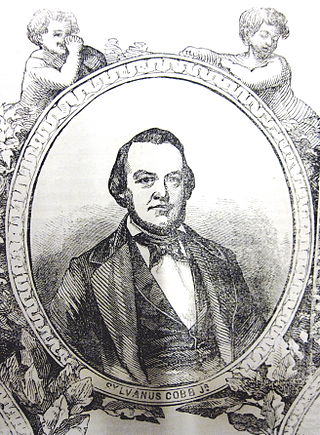
Sylvanus Cobb Jr. was an American popular fiction writer during the mid-19th century. His work was published in the New York Ledger, The Flag of Our Union, The Weekly Novelette, Gleason's Pictorial Drawing-Room Companion, and elsewhere.

The Melodeon was a concert hall and performance space in 19th-century Boston, Massachusetts, located on Washington Street, near West Street. Musical concerts, lectures, sermons, conferences, visual displays, and popular entertainments occurred there.

William Pembroke Fetridge (1827-1896) was a travel writer, publisher, bookseller and periodicals distributor. He lived in the Boston, Massachusetts area and in Paris, France.

Nathaniel Dearborn (1786–1852) was an engraver in 19th-century Boston, Massachusetts. He was born in New England in 1786 to inventor Benjamin Dearborn; siblings included John M. Dearborn and Fanny Dearborn Hanman. In Boston he learned engraving from Abel Bowen. By 1814 Dearborn worked from quarters on School Street; later moving to Market Street (ca.1823), State Street (ca.1826-1831) and Washington Street (ca.1832–1852). Around 1830, he also gave musical lessons on the flute.

The American House was a hotel in Boston, Massachusetts, located on Hanover Street. Abraham W. Brigham, Lewis Rice (1837–1874), Henry B. Rice (1868–1888), and Allen C. Jones served as proprietors. In 1851 the building was expanded, to a design by Charles A. Alexander. In 1868 it had "the first hotel passenger elevator in Boston." By the 1860s it also had "billiard halls, telegraph office, and cafe." In the late 19th century it was described as "the headquarters of the shoe-and-leather trade" in the city. Guests of the hotel and restaurant included John Brown, Ralph Waldo Emerson, William Whitwell Greenough, Charles Savage Homer, Zadoc Long, and George Presbury Rowell. Many groups held meetings there, among them: Granite Cutters' International Association of America, Letter Carriers' Association, National Electric Light Association, and New England Shorthand Reporters' Association. The hotel closed in 1916, and re-opened under new management in 1918. It permanently closed on August 8, 1935, and the building was shortly afterwards demolished to make room for a parking lot. The John F. Kennedy Federal Building now occupies the site.
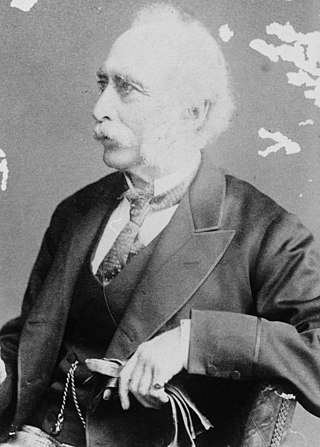
William Henry Maturin, was a senior public servant in the early days of the colony of South Australia and had a further career in Great Britain.

Newton Talbot was an American publisher, politician, and administrator at Tufts College.


